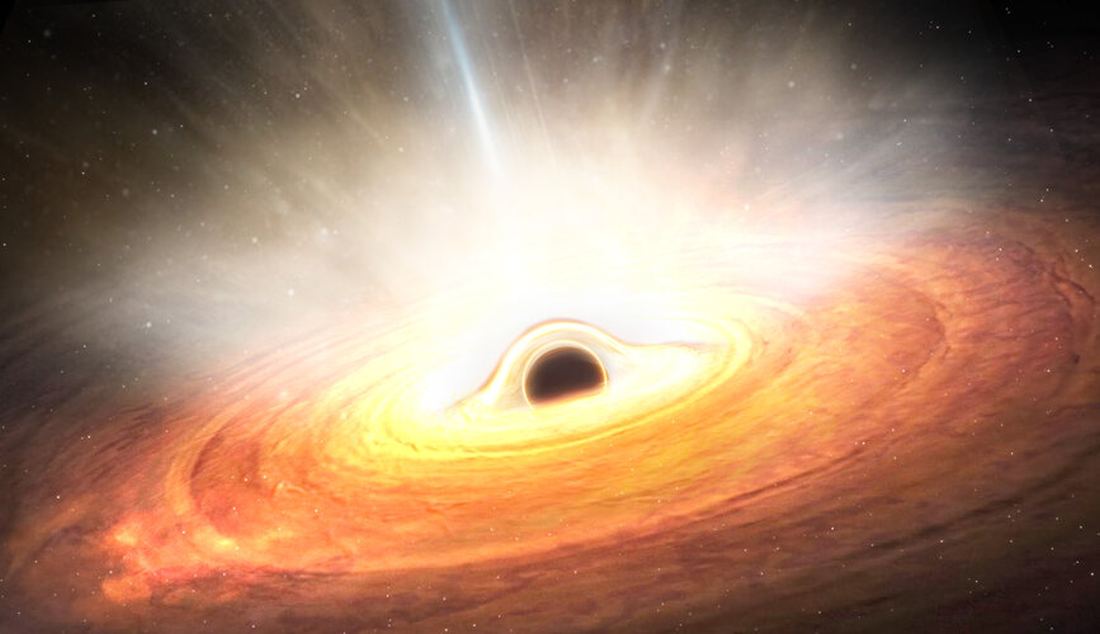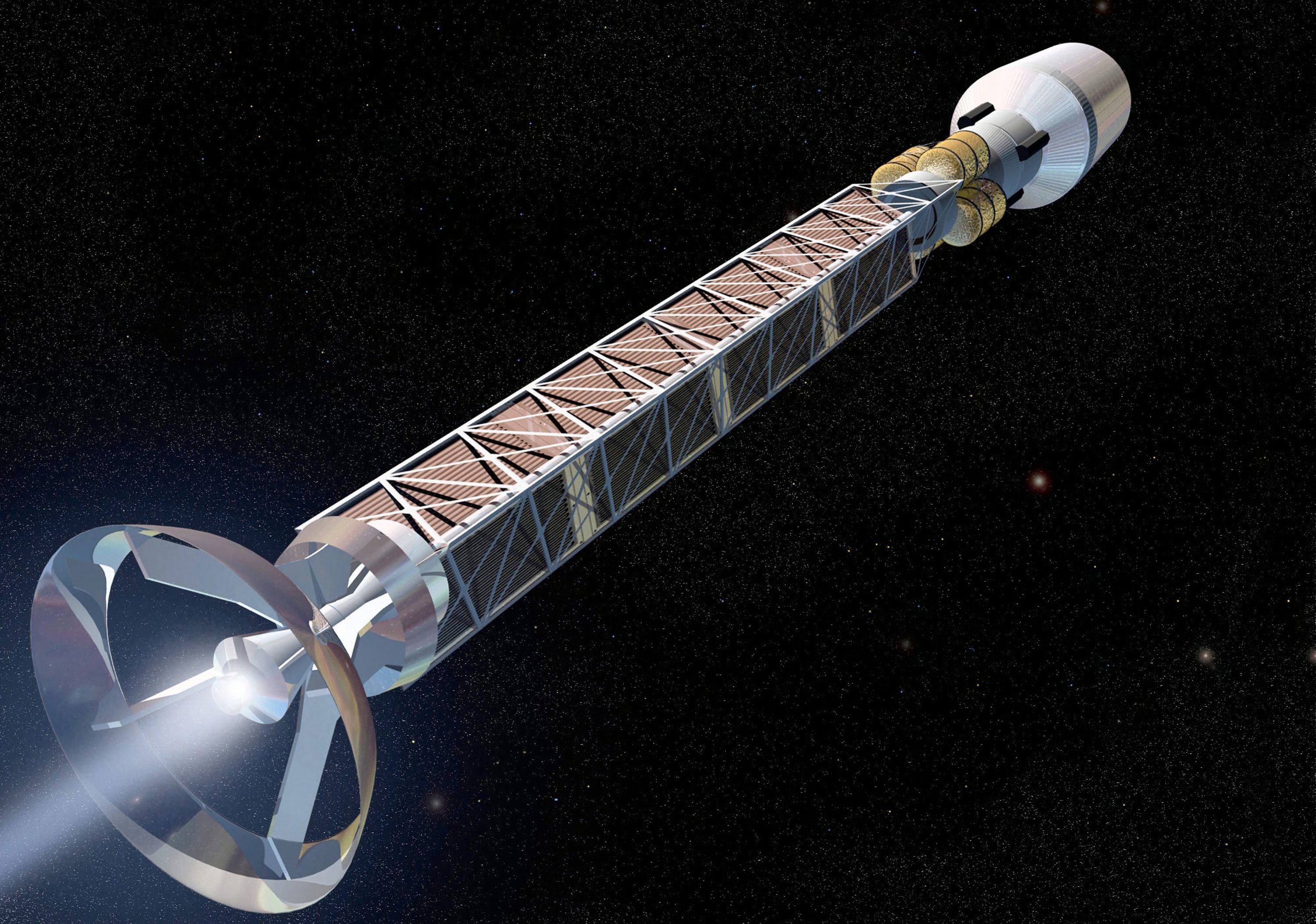Getting places in space quickly has been the goal of propulsion research for a long time. Rockets, our most common means of doing so, are great for providing lots of force but extraordinarily inefficient. Other options like electric propulsion and solar sailing are efficient but offer measly amounts of force, albeit for a long time. So scientists have long dreamed of a third method of propulsion – one that could provide enough force over a long enough time to power a crewed mission to another star in a single human lifetime. And that could theoretically happen using one of the rarest substances in the universe – antimatter.
Continue reading “Antimatter Propulsion Is Still Far Away, But It Could Change Everything”Could Planets Orbiting Two Stars Have Moons?

Exomoons are a hot topic in the science community, as none have been confirmed with astronomers finding new and creative ways to identify them. But while astronomers have searched for exomoons orbiting exoplanets around single stars like our Sun, could exomoons exist around exoplanets orbiting binary stars? This is what a recent study submitted to The Astrophysical Journal hopes to address as a team of researchers from Tufts University investigated the statistical likelihood of exomoons orbiting exoplanets with two stars, also known as circumbinary planets (CBPs). This study holds the potential to help researchers better understand methods needed for identifying exomoons in a variety of exoplanetary systems.
Continue reading “Could Planets Orbiting Two Stars Have Moons?”Webb Weighs an Early Twin of the Milky Way

What was the Milky Way like billions of years ago? One way we can find out is by looking at the most distant galaxies in the observable Universe. Seeing those far galaxies is one goal of the James Webb Space Telescope. It has revealed some surprising facts about early galaxies, and now it is starting to reveal the story of our own.
Continue reading “Webb Weighs an Early Twin of the Milky Way”Do the Fastest Spinning Pulsars Contain Quark Matter?

Neutron stars are so named because in the simplest of models they are made of neutrons. They form when the core of a large star collapses, and the weight of gravity causes atoms to collapse. Electrons are squeezed together with protons so that the core becomes a dense sea of neutrons. But we now know that neutron stars aren’t just gravitationally bound neutrons. For one thing, neutrons are comprised of quarks, which have their own interactions both within and between neutrons. These interactions are extremely complex, so the details of a neutron star’s interior are something we don’t fully understand.
Continue reading “Do the Fastest Spinning Pulsars Contain Quark Matter?”Another Clue About the Ultra-High Energy Cosmic Rays: Magnetic Turbulence
Space largely seems quite empty! Yet even in the dark voids of the cosmos, ultra-high-energy cosmic rays are streaming through space. The rays contain 10 million times as much energy as the Large Hadron Collider can produce! The origin of the rays though is still the source of many a scientific debate but they are thought to be coming from some of the most energetic events in the universe. A new paper suggests the rays may be linked to magnetic turbulence, coming from regions where magnetic fields get tangled and twisted up.
Continue reading “Another Clue About the Ultra-High Energy Cosmic Rays: Magnetic Turbulence”NASA Thinks it Knows Why Ingenuity Crashed on Mars

NASA’s Ingenuity helicopter sent its final signals to Earth in the earlier part of the year. Engineers have been studying these and have started to piece together a picture of events that led up to its final flight. They concluded that data provided by the navigation system was inaccurate leading to a chain of events that caused its ultimate demise. One of the biggest problems it seems is that the terrain was smooth leading to a lack of landmarks during Flight 72.
Continue reading “NASA Thinks it Knows Why Ingenuity Crashed on Mars”New Research may Explain how Supermassive Black Holes in the Early Universe Grew so Fast

Not long ago, the James Webb Space Telescope (JWST) peered into Cosmic Dawn, the cosmological period when the first galaxies formed less than one billion years after the Big Bang. In the process, it discovered something rather surprising. Not only were there more galaxies (and brighter ones, too!) than expected, but these galaxies had supermassive black holes (SMBH) much larger than cosmological models predicted. For astronomers and cosmologists, explaining how these galaxies and their SMBHs (aka. quasars) could have grown so large less than a billion years after the Big Bang has become a major challenge.
Several proposals have been made, ranging from optical illusions to Dark Matter accelerating black hole growth. In a recent study, an international team led by researchers from the National Institute for Astrophysics (INAF) analyzed a sample of 21 quasars, among the most distant ever discovered. The results suggest that the supermassive black holes at the center of these galaxies may have reached their surprising masses through very rapid accretion, providing a plausible explanation for how galaxies and their SMBHs grew and evolved during the early Universe.
Continue reading “New Research may Explain how Supermassive Black Holes in the Early Universe Grew so Fast”Early Earth's Oceans of Magma Accelerated the Moon's Departure
The Earth and Moon have been locked in a gravitational dance for billions of years. Each day, as the Earth turns, the Moon tugs upon the oceans of the world, causing the rise and fall of tides. As a result, the Earth’s day gets a little bit longer, and the Moon gets a little more distant. The effect is small, but over geologic time it adds up. About 620 million years ago, a day on Earth was only 22 hours long, and the Moon was at least 10,000 km closer than it is now.
Continue reading “Early Earth's Oceans of Magma Accelerated the Moon's Departure”Could the ESA’s PLATO Mission Find Earth 2.0?
Currently, 5,788 exoplanets have been confirmed in 4,326 star systems, while thousands more candidates await confirmation. So far, the vast majority of these planets have been gas giants (3,826) or Super-Earths (1,735), while only 210 have been “Earth-like” – meaning rocky planets similar in size and mass to Earth. What’s more, the majority of these planets have been discovered orbiting within M-type (red dwarf) star systems, while only a few have been found orbiting Sun-like stars. Nevertheless, no Earth-like planets orbiting within a Sun-like star’s habitable zone (HZ) have been discovered so far.
This is largely due to the limitations of existing observatories, which have been unable to resolve Earth-sized planets with longer orbital periods (200 to 500 days). This is where next-generation instruments like the ESA’s PLAnetary Transits and Oscillations of stars (PLATO) mission come into play. This mission, scheduled to launch in 2026, will spend four years surveying up to one million stars for signs of planetary transits caused by rocky exoplanets. In a recent study, an international team of scientists considered what PLATO would likely see based on what it would see if observing the Solar System itself.
Continue reading “Could the ESA’s PLATO Mission Find Earth 2.0?”Zap! A Black Hole Scores a Direct Hit With its Jet
Most galaxies are thought to play host to black holes. At the center of Centaurus A, a galaxy 12 million light years away, a jet is being fired out into space. Images that have been captured by NASA’s Chandra X-ray observatory show that the high energy particles have struck a nearby object creating a shockwave. The target is thought to be a giant star, maybe even a binary system, where the collision and turbulence has increased density in the region.
Continue reading “Zap! A Black Hole Scores a Direct Hit With its Jet”




